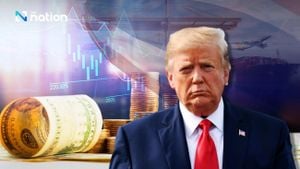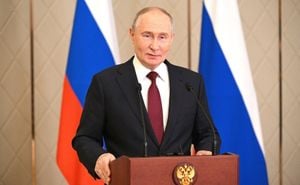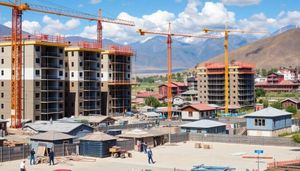The Bank of Korea has made a significant shift by lowering its benchmark interest rate from 3% to 2.75%, marking the end of the 3% era, which began more than two years ago. This decision, announced on February 25, 2025, during the Monetary Policy Committee meeting, reflects growing concerns about economic stagnation and uncertainty.
With this rate cut, the Bank of Korea aims to spur economic activity as it anticipates the growth forecast for the year will drop to 1.5%. This is 0.4 percentage points lower than earlier predictions made only weeks before and significantly below estimates from international organizations and the government.
Governor Lee Chang-yong, who led the decision to cut rates unanimously agreed upon by the committee members, stated, "I deemed it appropriate to ease down the benchmark interest rate to alleviate downward pressure on the economy." These sentiments were echoed throughout the meeting, indicating widespread agreement among policymakers on the urgent need to support the faltering economic conditions.
The rate reduction follows previous cuts made in October and November of 2024, with the most recent decision signaling perhaps the beginning of another chapter for South Korea's monetary policy, shaped by the adverse effects of domestic politics and international trade policies. Banking regulations and the rising exchange rate pressures served as additional catalysts for the move.
After months of maintaining the rate due to concerns over rising exchange rates, the Bank’s current outlook is more pessimistic. The benchmark interest rate has not been this low since October 2022, when it was set at 2.5%. This brings the current gap between the U.S. Federal Reserve's rates and Korea’s rate to 1.75%, which has raised questions about the competitiveness of the Korean economy.
Lee also indicated there is consensus among the Monetary Policy Committee members about possible additional cuts based on surrounding circumstances, hinting at the prospect of more rate adjustments in the coming months. This flexibility may be necessary as various global and domestic factors continue to create economic pressures.
Despite the Bank of Korea’s efforts to stimulate the economy through lowered rates, Lee Bok-hyun, the head of the Financial Supervisory Service, expressed concerns during the Financial Situation Review meeting. He stated, "The rate cut might not sufficiently transmit its effects on the domestic economy," pointing out the need for cautious monitoring to accurately gauge the effectiveness of the new rate on consumer and business lending rates.
Market analysts suggest the approach taken by the Bank of Korea signifies the challenges of managing monetary policy amid fluctuated conditions. Political instability, especially within domestic governance contexts, and uncertainties introduced by international trading environments, remain serious concerns for the financial sector.
Lee emphasized the need for strengthened monitoring of the interest rate's impact across sectors, acknowledging potential constraints on recovery due to persistent high rates of exchange and other inflationary pressures. Financial institutions are now urged to align their lending rates more closely with the benchmark rates to maximize the intended effects of monetary policy adjustments.
Looking forward, experts agree on the necessity of using fiscal policy and additional monetary tools to maximize economic recovery. Many believe approaches such as increasing financial support for small and medium enterprises will be pivotal, as highlighted by calls for reforms from financial authorities to address precarious business environments worsened by delayed policy implementations.
With these adjustments firmly under review, both market confidence and consumer optimism are key factors. How effectively the Bank of Korea can navigate through this period of uncertainty and stimulate the economy will be closely watched not only within South Korea but on the global financial stage, where interconnected economic policies directly impact growth trajectories.
All indications show South Korea is poised for significant changes on the monetary policy front. The decisions made now will shape the economic environment for years to come, potentially impacting everything from consumer spending habits to international investments.



